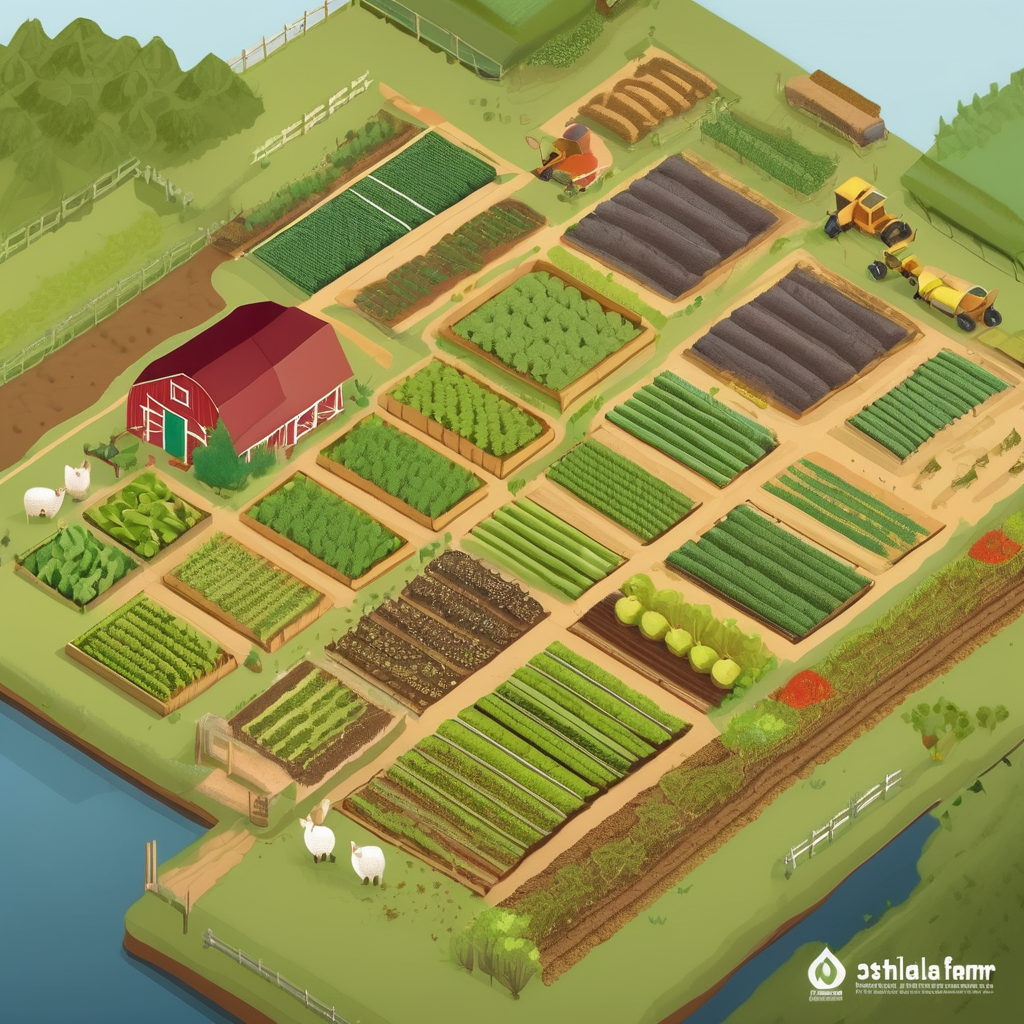As the desire for self-sufficiency and a more harmonious relationship with nature grows, many aspiring homesteaders find themselves drawn to the allure of a substantial acreage.
With 15 acres at your disposal, the possibilities for crafting a truly remarkable homesteading haven are vast, offering the space and resources to create a self-sustaining oasis tailored to your unique vision.
Envisioning Your Homestead Paradise
Before delving into the design process, take the time to envision your ultimate homesteading aspirations. Do you dream of a diverse array of livestock grazing on lush, rolling pastures?
Or perhaps your focus lies in cultivating a flourishing garden, complete with an orchard and ample space for crop cultivation? Alternatively, you may envision a harmonious blend of both, where plants and animals coexist in a symbiotic ecosystem.
Zoning for Harmony and Efficiency
Once you’ve defined your homesteading goals, it’s time to divide your 15-acre expanse into strategic zones. This approach not only promotes efficiency but also ensures a harmonious coexistence between various elements of your homestead.
The Residential Zone: At the heart of your homestead lies the residential zone, where your home and essential outbuildings reside. Position this area for optimal convenience and accessibility, while considering potential future expansions or additions.
The Kitchen Garden and Orchard: Locate your kitchen garden and orchard in close proximity to your home, allowing for easy tending and harvesting. Incorporate raised beds, trellises, greenhouses or high tunnels to maximize productivity within this zone.
The Crop Fields and Pastures: With ample acreage at your disposal, dedicate a substantial portion of your land to cultivating a diverse array of crops, from staples like grains and legumes to specialty crops tailored to your climate and preferences. If raising livestock is part of your plan, allocate ample space for grazing pastures and rotationally grazed paddocks.
The Livestock Quarters: If animal husbandry is a priority, designate a separate zone for animal housing, such as coops, barns, and shelters. Ensure this area is designed with the well-being of your livestock in mind, providing ample space, proper drainage, and easy access to pastures and grazing areas.
The Wilderness Refuge: Leave a portion of your land untouched, allowing native flora and fauna to thrive. This wilderness refuge not only fosters biodiversity but also serves as a source of natural resources for your homestead, such as foraged foods, medicinal plants, and timber.
The Aquaculture Zone: With 15 acres at your disposal, you may consider dedicating an area to aquaculture endeavors, such as a pond for fish or an aquaponics system, further diversifying your self-sufficiency efforts.
The Forestry and Woodlot: Depending on your climate and land characteristics, you may choose to designate a portion of your acreage as a woodlot or forest, allowing for sustainable timber harvesting and providing a source of firewood and construction materials.
Integrating Sustainable Systems
To truly embrace the homesteading lifestyle, it’s crucial to incorporate sustainable systems into your design. Implement strategies for water conservation, such as rainwater harvesting, greywater recycling, and efficient irrigation techniques like drip irrigation or keyline design.
Explore renewable energy sources like solar panels, wind turbines, or even a small-scale hydroelectric system to reduce your reliance on the grid and minimize your carbon footprint. Additionally, establish composting systems and vermiculture (worm farming) to transform organic waste into nutrient-rich soil amendments, fostering a closed-loop ecosystem within your homestead.
Permaculture Principles and Companion Planting
As you plan your gardens, orchards, and crop fields, consider embracing permaculture principles and companion planting techniques. These methods not only promote biodiversity but also enhance soil health, deter pests, and optimize yields through strategic plant guilds and polycultures.
By carefully selecting complementary plant species and designing interconnected systems that mimic natural ecosystems, you can create a self-sustaining, resilient, and abundant homestead.
Homesteading Ideas for 15 Acres
With 15 acres at your disposal, the possibilities for your homesteading endeavors are truly expansive. Consider incorporating some of these ideas into your design:
- Establish a diverse orchard with a variety of fruit and nut trees, creating a year-round harvest.
- Raise a small herd of livestock, such as cattle, goats, sheep, or pigs, for meat, dairy, and fiber production.
- Dedicate a portion of your land to raising chickens, ducks, turkeys, or other poultry for a consistent supply of eggs and meat.
- Explore the world of beekeeping and establish apiaries to aid in pollination and produce delicious honey.
- Cultivate large vegetable gardens and fields with a rotating crop plan to ensure a steady supply of fresh produce.\
- Build multiple greenhouses or high tunnels for year-round growing, extending your growing season and increasing yields.
- Incorporate aquaculture elements, such as a pond or aquaponics system, for raising fish and integrating them into your closed-loop system.
- Develop a food forest or edible landscape, blending edible plants with ornamentals for a beautiful and productive outdoor space.
- Establish a small-scale timber operation, sustainably harvesting wood for construction, heating, or other purposes.
- Dedicate a portion of your land to experiment with alternative farming methods, such as permaculture or biodynamic practices.
- Create nature trails, picnic areas, or camping spots to fully embrace the outdoor lifestyle your homestead offers.
Final Thoughts
Designing your 15-acre homestead is an exciting and rewarding journey, offering ample space and resources to bring your self-sufficient dreams to life.
By carefully zoning your acreage, integrating sustainable systems, and embracing permaculture principles, you can create a thriving, resilient oasis that not only provides for your needs but also nurtures a deep connection with the land and the natural world around you.
